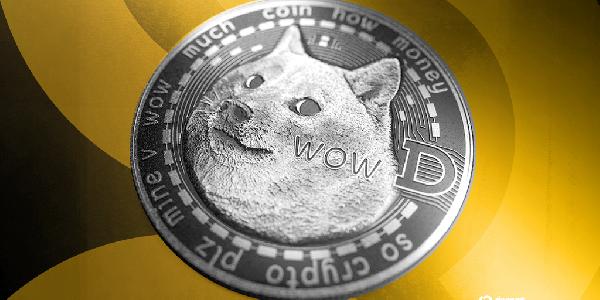Bitcoin is widely considered the most secure and decentralized digital asset. But for all its strength as a store of value, it’s historically offered little financial utility due to network limitations, while its ballooning price has kept it from being seen as everyday spending money.
Bitcoin DeFi, also known as BTCfi—a term referring to decentralized finance applications built on Bitcoin—is emerging to change that. Sui is one of several layer-1 blockchains now supporting Bitcoin-based functionality, along with the likes of Solana, Aptos, and Cardano.
“Most of us begin our journey in digital assets as Bitcoiners, drawn to BTC as a secure and valuable blue-chip asset—but until recently, Bitcoin’s utility has primarily been limited to a store of value.” said Adeniyi Abiodun, co-founder and CPO at Mysten Labs, the original team behind the Sui network.
He added that Sui enables access to DeFi and rewards for Bitcoin users, so they can “move beyond passive holding” of BTC.
What Bitcoin DeFi looks like on Sui
Sui’s BTCfi ecosystem now includes several distinct integrations. First, there’s Wrapped Bitcoin (WBTC), brought in through the Sui Bridge. This version of Bitcoin, minted on Ethereum and managed by custodians, offers the fastest route into DeFi apps on Sui. Users can deploy their WBTC into decentralized exchanges like Bluefin, or lending protocols such as Suilend and Navi. While WBTC comes with trust tradeoffs, its liquidity and infrastructure are battle-tested.
Then there’s LBTC, a Bitcoin derivative issued by Lombard Finance. It’s designed for users looking to put their BTC to work in yield strategies, with features like overcollateralized minting and integration into fixed-income DeFi products. LBTC offers flexibility while reducing some of the dependency on cross-chain bridges.
And more recently, Sui expanded its BTCfi ecosystem by integrating with Bitcoin layer-2 network Stacks. This collaboration aims to enable Bitcoin holders to participate in lending, borrowing, trading, and liquid staking services, typically traditionally limited to chains like Ethereum or Solana, or wrapped versions of Bitcoin on various chains.
Abiodun said that Bitcoin-related assets comprise more than 10 of total value locked (or TVL) on Sui, which he said “tells us there’s demand for Bitcoin to do more than just sit on the sidelines.”
What is sBTC on Sui?
sBTC stands for Stacks BTC and is a 1:1 Bitcoin-backed asset on the Stacks Bitcoin layer-2 network, enabling decentralized movement of BTC into and out of Bitcoin layers without relying on centralized custodians. Unlike wrapped assets such as wBTC, which depend on third-party custodians to hold and issue tokens, sBTC uses a decentralized network of signers.
These signers approve sBTC minting and redemption through a threshold consensus mechanism—typically requiring 70 approval—to maintain both security and liveness of the protocol. The goal is to provide Bitcoin holders with a way to access DeFi protocols while preserving the trust-minimized ethos of Bitcoin itself.
Abiodun said that sBTC lets Bitcoin holders earn rewards and participate in DeFi using their Bitcoin, without depending on centralized intermediaries. It also gives developers reliable, scalable access to Bitcoin liquidity, allowing them to create more sophisticated and user-friendly applications.
“We look for potential integrations that will enhance user and developer experiences within a secure, fast, and reliable environment,” Abiodun said, adding that Stacks is part of the “growing list” of allies including Babylon, Redstone, Lombard, Cubiest, and SatLayer that are working to “help unlock Bitcoin’s full potential.”
From the Stacks side, the intent is to bridge Bitcoin into other ecosystems in a way that remains true to its ethos of decentralization.
“This integration between Sui and Stacks will enable Bitcoin holders to deploy their BTC into DeFi through Sui without any reliance on centralized custodians,” said Rena Shah, a contributor to the Stacks BD Working Group.
Through this integration and sBTC, Stacks aims to help pave new avenues for Bitcoiners to make their assets productive.
“Participating on Bitcoin directly is still limited,” Shah added. “Having an L1 like Sui recognize sBTC on Sui means all holders can earn yield and stay true to Bitcoin’s trustless ethos, wherever they choose to do DeFi.”
Bitcoin DeFi on other chains
Sui isn’t the only network building around Bitcoin. Other chains are also racing to unlock BTC utility, but with varying degrees of decentralization and usability.
Cardano, for example, has been experimenting with Bitcoin wrappers and synthetic assets that could let BTC holders participate in DeFi through Cardano’s extended UTXO model.
On Cardano, BitcoinOS enhances the Extended UTXO (EUTXO) model by enabling BTC to interact with Cardano’s smart contracts. This allows Bitcoin holders to use their BTC in DeFi activities like lending or staking on Cardano’s protocols, such as those powered by AnetaBTC.
Solana, meanwhile, supports wBTC through Ethereum bridges, with integration across decentralized exchanges (or DEXes) like Jupiter and Orca. But its Bitcoin liquidity is relatively thin compared to ETH-based assets.
What sets Sui apart is its attempt to unify these models, offering custodial bridges, synthetic derivatives, and trust-minimized assets within a single environment.
Aptos and Sui are both Layer-1 blockchains built with the Move programming language, and are both advancing BTCFi. However, they differ in their technical approaches and focus.
Aptos emphasizes yield-driven DeFi through integrations like xBTC (via OKX). Its connections, such as with the B² Network, enable trustless Bitcoin bridges and yield opportunities, making it a hub for DeFi protocols like Panora Exchange and Aries Markets. Aptos’ environment prioritizes Bitcoin liquidity for lending, swapping, and staking.
Expanding Bitcoin‘s use
Using Bitcoin directly on-chain remains limiting for most users. Native BTC transactions don‘t support smart contracts, and developing applications directly on Bitcoin is still difficult, despite progress from projects like Ordinals and BitVM.
Abiodun said that Sui “extends Bitcoin’s utility, enabling users to move beyond holding.”
The growing BTCfi category aims to bring Bitcoin into active use without compromising on decentralization. Sui’s approach—through sBTC, wBTC, LBTC, and other assets—shows how multiple routes to BTC utility can coexist within one ecosystem. Sui also recently announced a collaboration with Bitlayer to launch the “first trust-minimized BitVM bridge" on Sui.
And there’s apparently more to come, with Abiodun saying that “BTCfi is a key strategic priority this year” for the Sui ecosystem.
Edited by Andrew Hayward
Your Email









